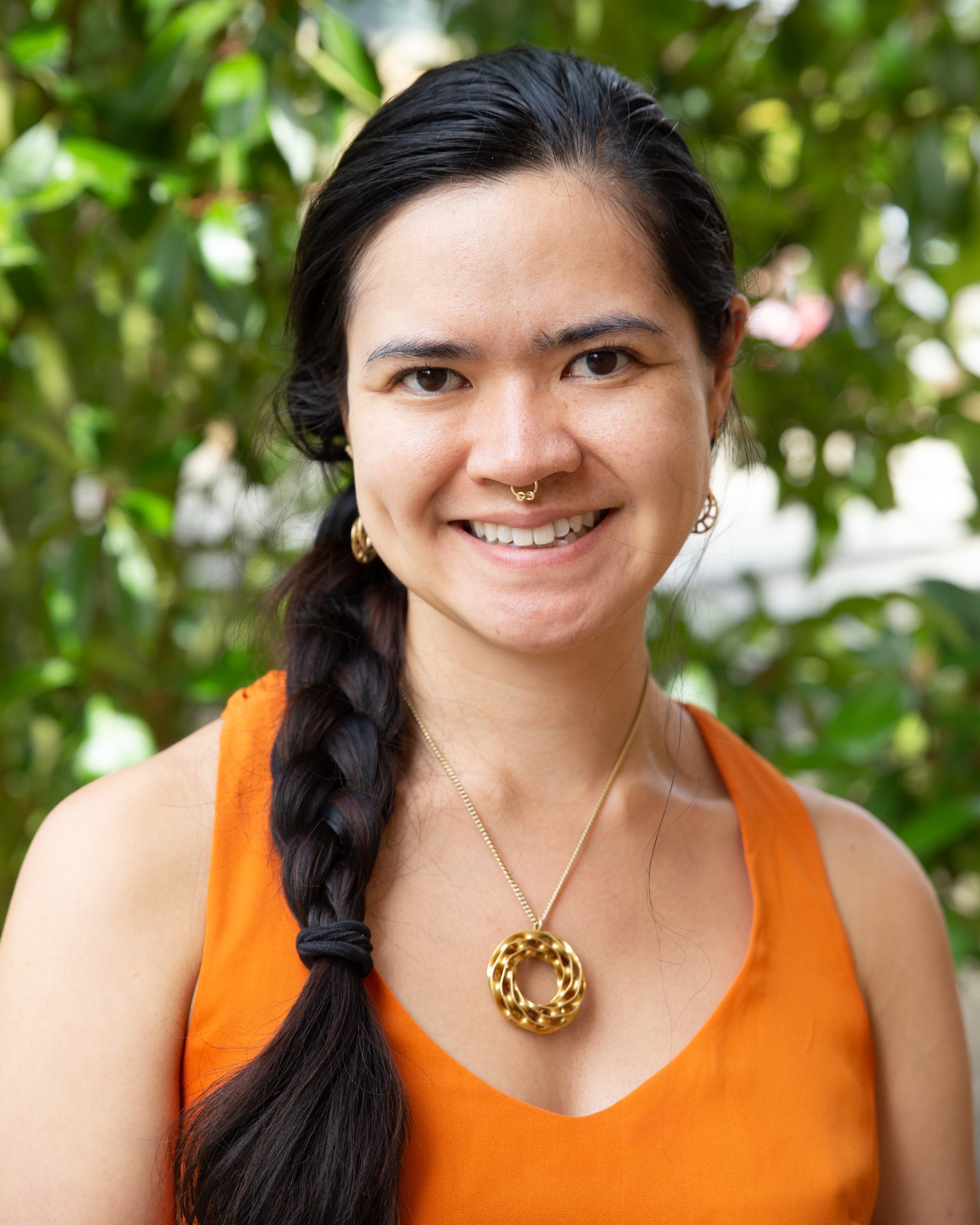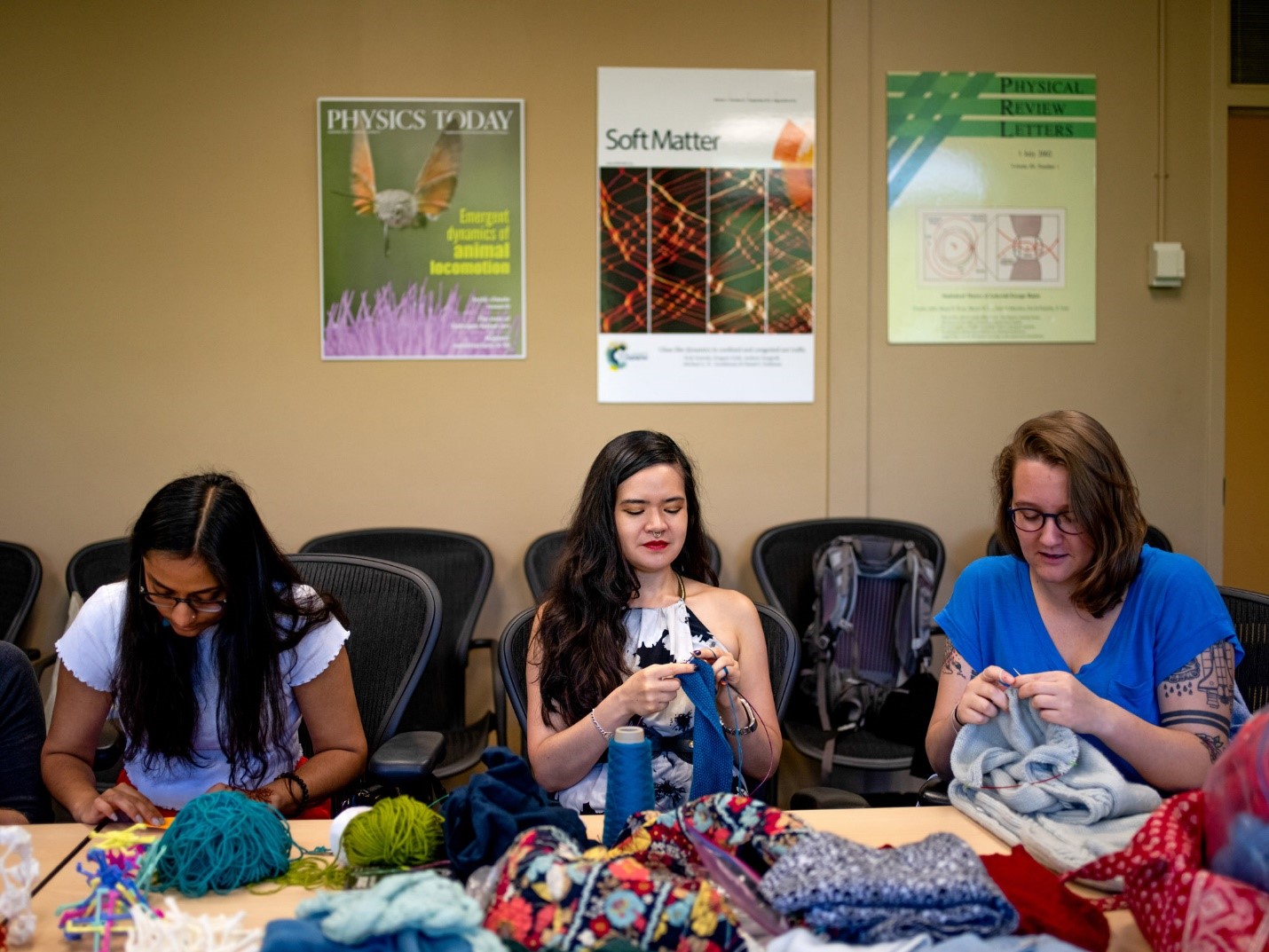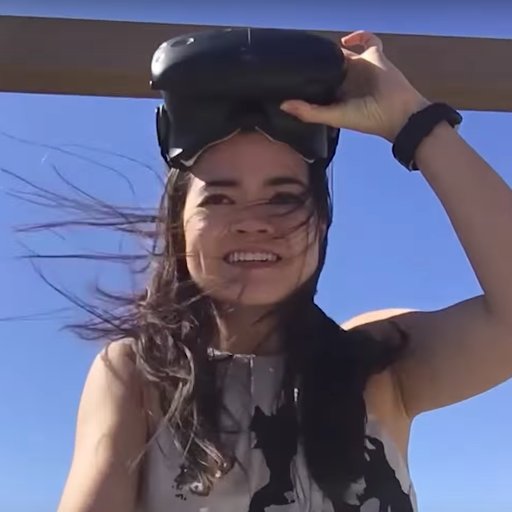An assistant professor in the School of Physics is a 2020 Cottrell Scholar, thanks to her efforts to stitch together her two passions: science and knitting.
Elisabetta Matsumoto, who has been at Georgia Tech since 2016, is one of 25 new Cottrell Scholars Award winners announced by the private Resource Corporation for Science Advancement. According to their website, the awards honor and help to develop “outstanding teacher-scholars who are recognized by their scientific communities for the quality and innovation of their research programs and their potential for academic leadership.” The winners study in the disciplines of physics, chemistry, and astronomy, and each recipient receives $100,000.
“I was so excited when I heard about the Cottrell Scholar award,” Matsumoto says. “I’ve known about it for a very long time as many of my friends and physicists I look up to have gotten it over the years. I love the idea that it’s a community of teacher-scholars that promotes a holistic sense of education and research. These colleagues are ones with whom I will be able to work on educational initiatives and get support and mentorship in my research areas.”
Matsumoto won the Cottrell Scholar Award for her proposal, “Knotty Knits: Using Topological Constraints to Program Geometry and Elastic Response in Knitted Textiles with Lattice Defects.” The proposal stems from her National Science Foundation-funded grant entitled “What A Tangled Web We Weave,” a five-year project in which Matsumoto is researching the mathematics, physics, and engineering of knitting.
In May 2019, The New York Times published a story highlighting Matsumoto’s yarn-based research. The story was inspired by her presentation, “Twisted Topological Tangles,” at the American Physical Society’s annual meeting in March of that year. The headline for the story incorporated a quote from Matsumoto: “‘Knitting is Coding,’ and Yarn is Programmable in this Physics Lab.”
“The New York Times article was really momentous for our group,” Matsumoto says. “We have received words of excitement and encouragement from all across the globe! I think it has really captured people’s imaginations. I think it’s a boost to [graduate students] Mike Dimitriyev, Shashank Markande and Krishma Singal who have worked so hard on bringing this project to fruition. I’m really happy to see so many people appreciating their hard work.”
Matsumoto, who has been knitting since she was a child, is the principal investigator of Georgia Tech’s Matsumoto Group, which explores the geometry of materials. A paragraph on her lab’s website explains her fascination with knitting as physics, along with the possible practical applications of her research:
Spinning and weaving were some of the first technologies developed by man. These historical inventions continue to influence daily life, yet only at an empirical level do we understand the remarkable physical and material properties they can achieve. Spinning simply adds twist to fibers, vastly increasing tensile strength while maintaining flexibility. Weaving and knitting use single threads to generate durable yet pliant two-dimensional surfaces…Building upon microscopic properties of the thread, from twist to chemistry to friction, my group will seek a set of local rules that control the global behavior of fabrics. Such a constitutive model will develop an understanding of the full range of fabric deformations, crucial for such applications as mechanoresponsive garments to biocompatible weaves and networks used in tissue engineering. Beyond technological advances, such a model will shed light on fundamental questions, such as polymer entanglement or the mechanical properties of biological tissue and networks.
Matsumoto has also used virtual reality in her research into topology, which is the study of surfaces that can be bent, curved, twisted or otherwise deformed, but never broken or torn. As her website describes, Matsumoto and her fellow researchers study the geometry and topology of soft materials.
“I will be continuing my work on using virtual reality as an educational tool in physics and mathematics education. This type of environment [the Cottrell Scholars] is so beneficial to the community because it helps us to communicate best practices for education and new educational initiatives,” Matsumoto says.
Previous Georgia Tech recipients of the Cottrell Scholar Award include David Collard of the School of Chemistry and Biochemistry, along with Michael Schatz and Tamara Bogdanović, both of the School of Physics.
For More Information Contact
Renay San Miguel
Communications Officer
College of Sciences
404-894-5209





